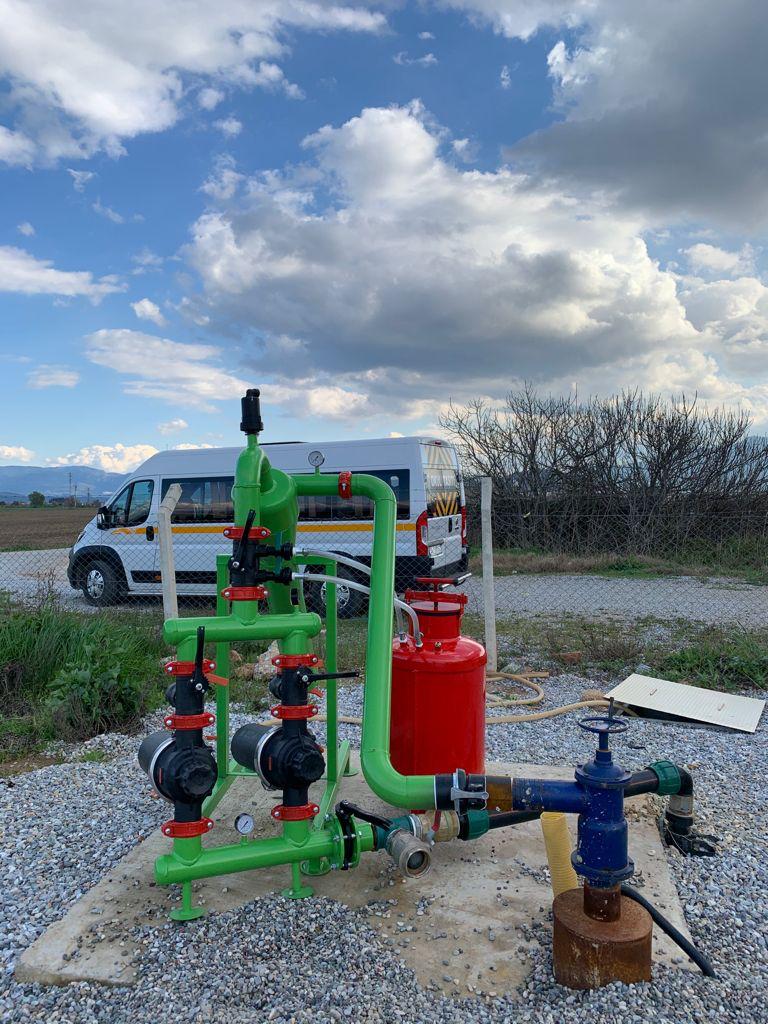Appropriate filtration can help to extend the life and improve the maintenance of any irrigation system. For drip or micro sprinklers emitters, filtration is a basic need to avoid clogging. A sand grain, rust and other materials can block micro and mini and sprinklers’ nozzles which could cause unintentional plants dehydration. Many water sources like reservoirs, rivers and of course waste water contain a lot of organic materials such as alga and bacteria, that have to be removed especially from drip irrigation, mist spray [Nebulization] and micro-sprinkle systems, as small as they are. Not removing those substances can lead to creation of dirt accumulations and colonies of harmful material within the emitters and the rest of the equipment. Naturally, rust and sand grains are a safe platform for coating by organic materials and creating large chunks within the systems, causing a total blockage of water transferring.
Screen Filters
Screen filters are probably the oldest and most common in irrigation systems. They are excellent in their ability to remove hard particles like rust. But when it comes to sand, it can get stuck inside the screen and rapidly block it. Usually Screen Filters are less expensive. Delicate organic materials cross the screens and raw material usually smears on top of the screens, deriving a more frequent cleaning interval. The common solution in Screen Filters is enlarging the filtration to expand the cleaning intervals. Today, there are several modern solutions of self-cleaning Screen Filters. This is done by back-washing and / or repeat wash using a sprinkler with inner spraying nozzles for cleaning (similar methods used in commercial dish-washers machines). In order to wash the filter in clean water, it takes at least 2 parallel filters, so that one contributes clean water to wash the other. Semi automatic screen filters are available as well, when the filter is being washed by turning a manual crank that rotate internal nozzles spine or a circular brush. If there is no automatic self-cleaning mechanism, the use of Screen Filters is not recommended in case the water contains organic materials. Clogging of material on top of the screens causes a large pressure difference that can bring to the collapse of the screen, or decreasing and even full stopping of irrigation water flow. The Screen Filter is cleaned by removing the screen and washing it under Strong flow of water or by using a suitable brush. The common screen filtration elements in the market are usually made of Stainless Steel, Polypropylene or Nylon.
Filter Media
Filtering irrigation water with media (sand/gravel) filters also known as depth filtration. The media filters perform the filtration of water through a thick layer of graded particles. These particles can be sand, gravel or other granular sorted materials. The filtration grade depends on the effective size of the bedding and the water velocity passing through the filter.
Disc Filters
Disc Filters integrate the benefits of the old filtering methods screen and media, as well as having their own unique advantages. Manual disc Filters are useful for filtration of both sand granules and a variety of organic materials. Disc filters are the best choice for almost all micro irrigation systems. Small Nylon discs are grooved on both sides of each disc to a specific micron size. A series of these discs are then stacked and compressed on a specially designed spine. When stacked, the groove on top runs opposite to the groove below, creating a filtration element with a statistically significant series of intersecting grooves which trap the solids. The stack is enclosed in corrosion and pressure resistant housing. During filtration, the discs are tightly compressed together by a combination of either spring power or tightening nut and the differential pressure, thus providing high filtration efficiency. Filtration occurs while water is percolating from the outer diameter to the inner diameter of the element. Depending on the micron grading, in irrigation water filtration it is common to use from 18 (in 400 micron discs) to 32 (in 20 micron discs) disc quantity per each 1 cm of the spine length stopping points in each track, thus creating the unique in-depth filtration. During the filtration process, the filtration discs are tightly compressed together by the spring’s power (or tightening nut) and the differential pressure, thus providing high filtration efficiency. Filtration occurs while water is percolating from the peripheral end to the core of the element.
The Disc Filter is cleaned by unscrewing the disc’s tightening nut, and wash the released discs under strong flow of water. The discs roll around a central spine rapidly, thus part of the dirt is separated due to the centrifugal force.
For automatically cleaning the discs, there is a releasing mechanism of the clamp between the discs, thus separated from each other the trapped particles are released and back-washed, know methods called Spin klin and Spin clean.
Hydro-cyclone [Centrifugal Filters]:
Also known as “sand separators, centrifugal filters are mainly for the removal of particles such as sand, and other solids from the irrigation water. They are ideal for situations where a pile of sand, is present in water.



